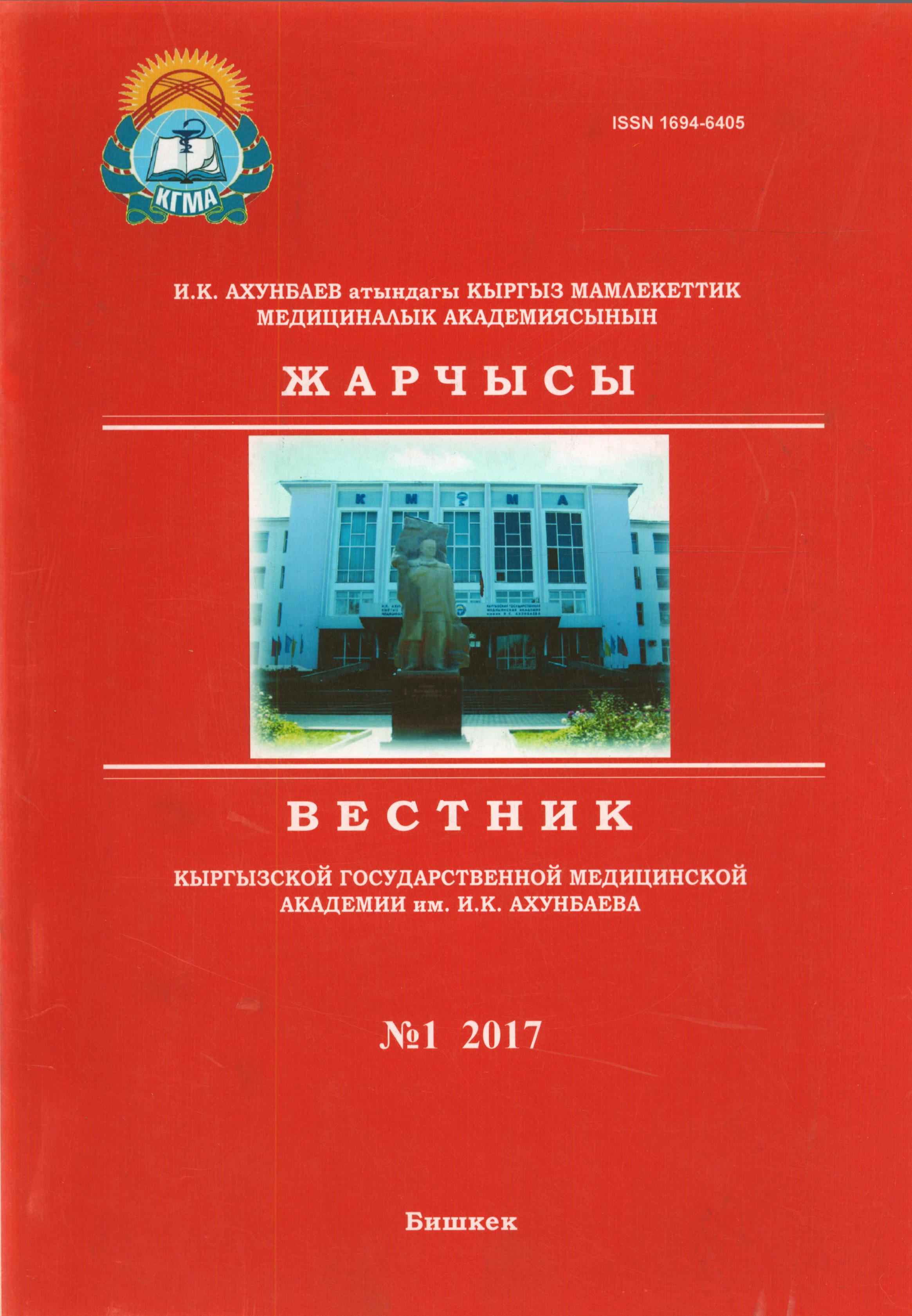ИСПОЛЬЗОВАНИЕ ФТОРХИНОЛОНОВ ПРИ ЛЕЧЕНИИ ХИРУРГИЧЕСКИХ ПАТОЛОГИЙ
Аннотация
В статье идет речь об антибиотикорезистентности, которая предъявляет мировой медицинской общественности новые требования в отношении правил применения антибактериальных препаратов в клинической практике. Структурные и фармакодинамические особенности моксифлоксацина - представителя IV поколения фторхинолонов - позволяют рассматривать его в качестве препарата, наиболее полно соответствующего современным критериям клинически эффективного антибиотика в терапии широкого спектра инфекционных заболеваний. В статье описаны результаты нескольких многоцентровых клинических исследований с участием моксифлоксацина, а также затрагиваются вопросы его использования в качестве препарата второй линии при туберкулезном поражении дыхательных путей.
Ключевые слова:
антибиотикорезистентность, антибактериальные препараты, фторхинолоны III-IV поколенийБиблиографические ссылки
1. World Health Organisation (2014) WHO’s first global report on antibiotic resistance reveals serious, worldwide threat to public health. News releases, April 30 (http://www. who.int/mediacentre/news/en/)
2. Lesher G.Y., Froelich E.J., Gruett M.D. et al. (1962) 1, 8-Naphthyridine derivatives. A new class of chemotherapeutic agents. J. Med. Chem., 5: 1063-1065.
3. Nightingale C.H. (2000) Moxifloxacin, a new antibiotic designed to treat community-acquired respiratory tract infections: a review o f microbiologic and pharmacokinetic-pharmacodynamic characteristics. Pharmacotherapy, 20(3): 245-256.
4. Куценко М.А., Чучалин А.Г. (2013) Внебольничные инфекции нижних дыхательных путей: роль и место респираторных фторхинолов. РМЖ (Русский медицинский журнал), 5: 242-248.
5. Чучалин А.Г., Синопальников А.И., Козлов Р.С. и соавт. Внебольничная пневмония у взрослых. Практические рекомендации по диагностике, лечению и профилактике. Клин. микробиол. и антимикроб. химиотер, 2010, 12(3): 186-226.
6. Vardakas K.Z., Siempos I.I., Grammatikos А. et al. (2008) Respiratory fluoroquinolones for the treatment o f community-acquired pneumonia: a meta analysis o f randomized controlled trials. CMAJ, 179(12): 1269-1277.
7. Stahlmann R. (2002) Clinical toxicological aspects of fluoroquinolones. Toxicology Letters 2002, 127(1-3): 269-277.
8. Ball P., Mandell L., Patou G. et al. (2004) A new respiratory fluoroquinolone, oral gemifloxacin: a safety profile in context. Int. J. Antimicrob. Agents, 23(5): 421-429.
9. Ball P. (2000) New antibiotics for community- acquired lower respiratory tract infections: im proved activity at a cost? Int. J. Antimicrob. Agents, 16(3): 263-272.
10. Boswell F.J., Andrews J.M., Jevons G., Wise R.(2002) Comparison of the in vitro activities of several new fluoroquinolones against respiratory pathogens and their abilities to select fluoroquinolone resistance. J. Antimicrob. Chemother, 50(4): 495-502.
11. Andriole C.L., Andriole V.T. (2002) Are all quino-lones created equal? Medicguide Infect. Dis., 21: 1-5.
12. Peterson L.R. (2001) Quinolone molecular structure-activity relationships: What we have learned about improving antimicrobial activity. Clin. Infect. Dis., 33 Suppl. 3: S180-S186.
13. Zhao X., Wang J.Y, Xu C. (1998) Killing of Staphy lococcus aureus by C-8 methoxy fluoroquinolones. Antimicrob Agents Chemother. 42(4): 956-958.
14. Arroll B., Kenealy T. (2013) Antibiotics for the common cold and acute purulent rhinitis. Cochrane Database Syst. Rev., 6: CD000247.
15. Mandell LA, Wunderink RG, Anzueto A et al. Infectious Diseases Society of America and American Thoracic Society. Infectious Diseases Society of America/American Thoracic Society consensus guidelines on the management of community- acquired pneumonia in adults. Clin Infect Dis.,2007, 44 (Suppl 2): 27-72.
16. Woodhead M, Blasi F, Ewig S and the ERS/ESCMID Task Force. Guidelines for the man agement of adult lower respiratory tract infections. Clin Microbiol Infect., 2011, 17 (Suppl. 6): 1-59.
17. Hammond JM, Potgieter PD, Hamslo D, et al. The etiology and antimicrobial susceptibility patterns of microorganisms in acute community-acquired lung abscess. Chest, 1995, 108: 937-941.
18. Ott SR, Allewelt M, Lorenz J et al. Moxifloxacin vs ampicillin/sulbactam in aspiration pneumonia and primary lung abscess. Infection, 2008, 36: 23
19. Polenakovik H, Burdette SD, Polenakovik S. Moxif loxacin is efficacious for treatment of community- acquired lung abscess in adults. Clin Infect Dis, 2005, 41: 764-765.
20. Tieying S, Li S, Rongmei W, et al. Clinical efficacy and safety of moxifloxacin versus levofloxacin plus metronidazole for community-acquired pneumonia with aspiration factors. Chin Med J, 2014, 127: 1201-1205.
21. Lipsky B.A., Berendt A.R., Cornia P.B et al. (2013) 2012 infectious diseases society of america clinical practice guideline for the diagnosis and treatment of diabetic foot infections. J. Am. Podiatr. Med. Assoc., 103(1): 2-7.
22. Lavery L.A., Armstrong D.G., Wunderlich R.P. et al. (2006) Risk factors for foot infections in individ uals with diabetes. Diabetes Care, 29(6): 1288-1293.
23. Frykberg R.G. (2005) A summary o f guidelines for managing the diabetic foot. Adv. Skin Wound Care, 18(4): 209-214.
24. Heystek M., Tellarini M., Schmitz H., Krasemann C. Efficacy and safety of moxifloxacin (Мокси) vs ciprofloxacin plus doxycycline plus metronidazole for the treatment of uncomplicated pelvic inflamma tory disease (PID). J Antimicrob Chemother 1999; 44 (SupplA): 143.
25. Angus D.C., Linde-Zwirble W.T., Lidicker J. et al. (2001) Epidemiology o f severe sepsis in the United States: analysis o f incidence, outcome, anassociated costs of care. Crit. Care Med., 29 (7): 1303-1310.
26. Martin G.S., Mannino D.M., Eaton S., Moss M. (2003) The epidemiology of sepsis in the United States from 1979 through 2000. N. Engl. J. Med., 348(16): 1546-1554.
27. Wang H.E., Shapiro N.I., Angus D.C., Yealy D.M. (2007) National estimates o f severe sepsis in United States emergency departments. Crit. Care Med., 35(8): 1928-1936.
28. Нестеренко А.Н. (2013) Степень антибиотико- резистентности патоггенов как доминанта мотивационных факторов выбора тактики антибиотикотерапии при хирургическом сепсисе. Харюв. хiрургiч. школа, 3(60): 97-102.
29. Руднов В.А., Носков И.Ю. (2009) Возможности монотерапии моксифлоксацином внебольничной пневмонии, осложненной сепсисом. Consilium medicum, 11: 5-7.
30. Conde M.B., Efron A., Loredo C. et al. (2009) Moxifloxacin versus ethambutol in the initial treatment of tuberculosis: a double-blind, randomised, controlled phase II trial. Lancet, 373(9670): 1183-1189.
31. Anzueto A, Niederman MS, Pearle J, et al. Community-acquired pneumonia recovery in the elderly (CAPRIE): efficacy and safety o f moxifloxacin ther apy versus that of levofloxacin therapy. Clin Infect Dis, 2006, 42: 73-81.
32. Zanel G.G., Noreddin A.M. (2001) Pharmacokinet ics and pharmacodynamics of the new fluoroquino lones: focus on respiratory infections. Curr. Opin. Pharmacol. 1(5): 459-463.



